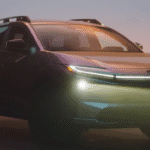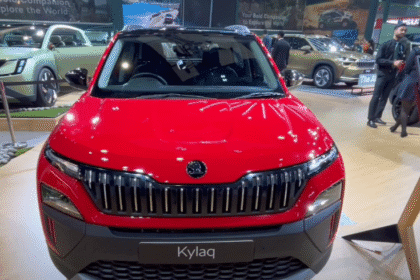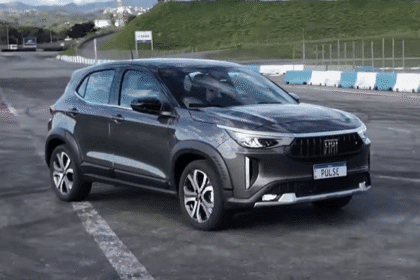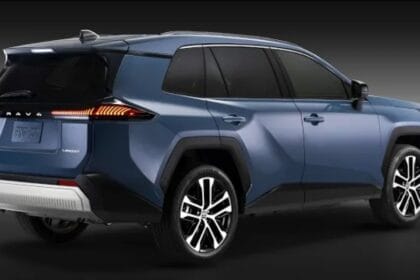The compact SUV market continues to evolve with electrification leading the charge. As competition intensifies among plug-in hybrid SUVs, Toyota has its eyes set on retaining dominance with the highly anticipated 2026 Toyota RAV4 Plug-in Hybrid Electric Vehicle (PHEV). Known for its reliability and value, the RAV4 PHEV is expected to deliver upgraded performance, extended electric range, and a price tag designed to challenge key rivals like the Ford Escape PHEV, Hyundai Tucson PHEV, and even new players like BYD’s Sealion 6.
2026 Toyota RAV4 PHEV Pricing: Competitive and Strategic
Toyota is expected to strategically price the 2026 RAV4 PHEV to undercut or match the performance-to-price value of rivals in the segment. Expected trims and pricing are:
- SE – Starting at $44,000
- XSE – Starting at $47,000
- Limited – Starting at $51,000
This pricing strategy keeps the RAV4 PHEV within reach of both premium buyers and eco-conscious families looking for an efficient, all-around SUV.
Key Upgrades and Performance Specs
Toyota isn’t just focusing on price the 2026 RAV4 PHEV is rumored to include substantial mechanical and technological upgrades:
- Engine: 2.5-liter 4-cylinder + dual electric motors
- Horsepower: Approximately 320 hp (up from 302 hp)
- Electric-Only Range: Up to 50 miles (compared to ~42 miles in previous models)
- Fuel Economy (Combined): Over 90 MPGe estimated
- 0-60 mph Time: Approx. 5.7 seconds
- Drivetrain: Standard AWD across all trims
- Charging: Level 2 charging time under 2.5 hours
These performance specs make the RAV4 PHEV not only one of the most powerful compact SUVs in its class but also among the most efficient.
Interior, Technology, and Safety
Inside, the 2026 RAV4 PHEV will likely continue Toyota’s recent trends toward premium finishes, larger infotainment screens, and tech-forward design:
- Infotainment: 12.3-inch Toyota Audio Multimedia touchscreen
- Digital Cluster: Fully digital 10-inch instrument panel
- Wireless: Apple CarPlay & Android Auto
- Safety: Toyota Safety Sense 3.0 with advanced driver-assistance systems (ADAS)
- Comfort: Heated and ventilated front seats, available panoramic sunroof, and upgraded sound insulation
How It Compares to the Competition
Here’s how the 2026 RAV4 PHEV stacks up against leading competitors:
| Feature | Toyota RAV4 PHEV | Ford Escape PHEV | Hyundai Tucson PHEV | BYD Sealion 6 |
|---|---|---|---|---|
| Starting Price | ~$44,000 | ~$34,895 | ~$35,350 | ~$48,990 |
| Electric Range (miles) | 50 | 37 | 33 | ~57 (92 km) |
| Horsepower | ~320 | 221 | 261 | ~319 |
| Drivetrain | AWD (standard) | FWD only | AWD (standard) | AWD (standard) |
| Acceleration (0-60 mph) | 5.7 sec | ~7.7 sec | ~8.6 sec | ~5.9 sec |
Toyota’s advantages lie in a higher electric range than most, superior performance, and AWD as standard, unlike some rivals.
Why the 2026 RAV4 PHEV Could Lead the Segment
- Power Meets Efficiency: With more than 320 hp and up to 50 miles of EV range, it’s hard to beat in real-world use.
- Toyota’s Legacy: Known for reliability and long-term resale value, the RAV4 enjoys strong brand loyalty.
- Versatility: Unlike many PHEVs, the RAV4 offers standard AWD—ideal for all-season driving and light off-roading.
- Incentives & Tax Credits: U.S. federal tax credits (up to $7,500) and additional state/local incentives may further lower the effective cost.
Final Verdict
The 2026 Toyota RAV4 PHEV brings meaningful upgrades without losing the formula that has made it a best-seller. With competitive pricing, more electric range, and enhanced power, it not only stands tall among legacy competitors but also challenges new EV entrants from Asia and Europe. For buyers looking for a well-rounded plug-in SUV that offers performance, efficiency, and value, the RAV4 PHEV should be at the top of the list.







